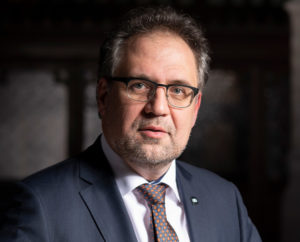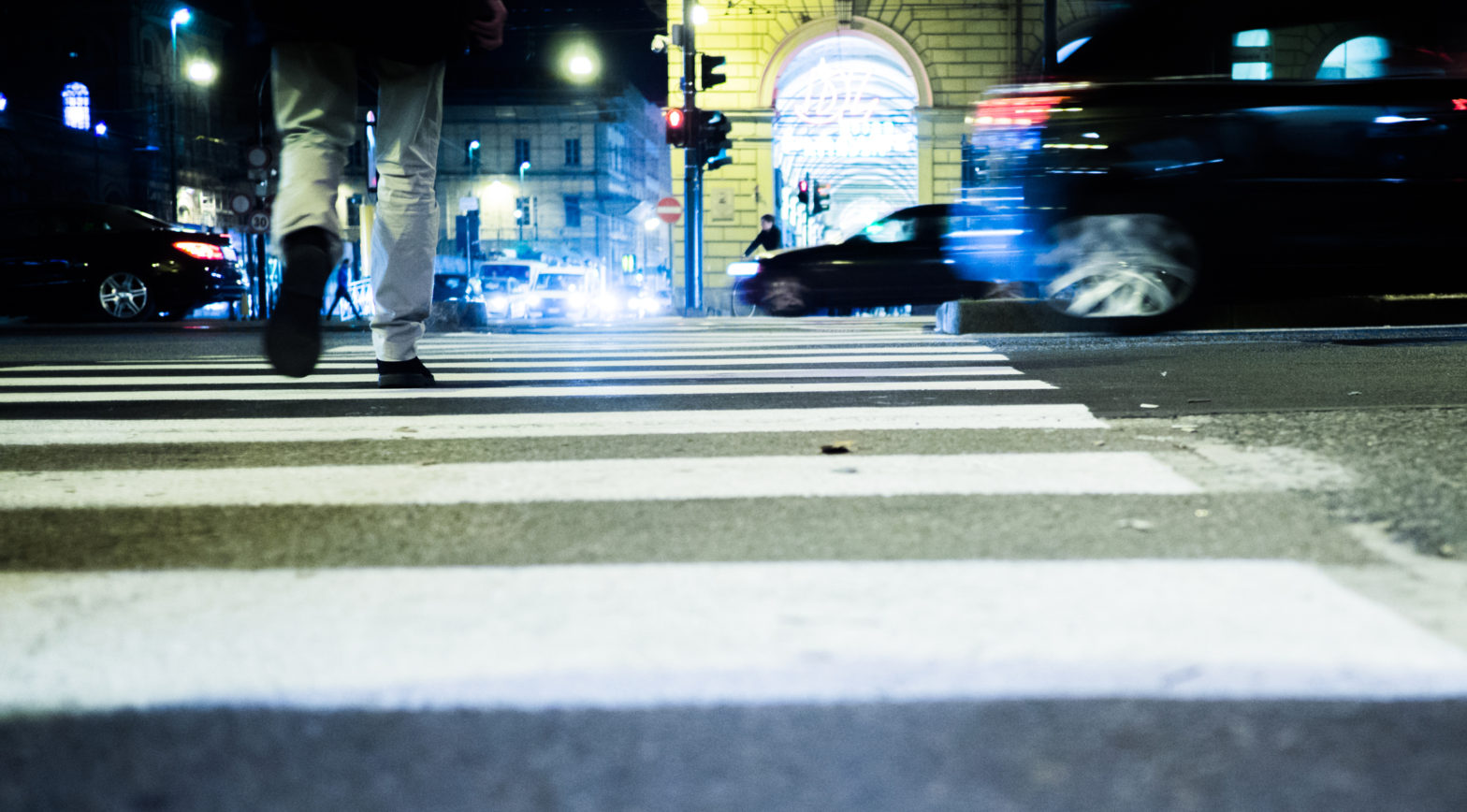
Photo: freight copia3
How transport leaders are tackling the challenges of urban freight
28 March 2024
by Christopher Carey
As deliveries and e-commerce continue to rise sharply post-pandemic, Christopher Carey spoke to four city transport leaders in Europe about the policies and strategies that are helping cities to adapt.
Madrid
With lorries and vans competing for space with cars, buses, mopeds, bikes and e-scooters, controlling the kerb in the EU’s second largest city is one of the highest priorities for Madrid’s director of transport, Lola Ortiz Sanchez.
“In Madrid we would like to optimise parking spaces and are currently working on expanding an app – DUM 360 – that regulates and controls parking, so people can load and unload more effectively.”

The app, which allows delivery drivers and companies to pre-book spaces, aims to streamline parking and prevent congestion in the city.
“It applies to all deliveries, from big companies to one person operations. Now we have 75 large operators on the app making more or less 20,000 deliveries a day – but we have more than 80,000 deliveries per day, so there’s a gap and this is a challenge.”
The project started in March 2023, but initially users weren’t fined if they didn’t use the app for deliveries.
“It was seen as a training period. But since last September we’ve started fining people if they use delivery spaces in an incorrect way, like staying too long or parking in a space they haven’t booked through the app.”
For those making deliveries the first 45 minutes are free – but after that they are required to pay.
Delivery providers who don’t use the service can also face a fine of €90 (US$97).
“With this app we will not only make deliveries more efficient, but will also reduce congestion.
“But we also need to look at how we can make delivery vans, trucks and lorries more energy efficient, because now they are responsible for 20 percent of the pollution in the city and 11 percent of the congestion.”
Along with this, the city is looking to expand the number of microhubs where more energy efficient modes of transport like e-bikes and e-cargo bikes can make last-mile deliveries.
Through the EU-funded LEAD project, the city is collaborating with five other cities – The Hague, Lyon, Porto, Budapest and Oslo – to develop digital twins to improve last-mile efficiency for deliveries.
“We are also looking at how to integrate drones into deliveries, and have established an urban air commission, bringing together key stakeholders and experts in the field.
“It will look not only at deliveries, but also how to incorporate drones for civil engineering, security, and other fields.
“This is a very interesting area that we’d like to develop in the future.”
Krakow
According to Lukasz Franek, Director at Krakow’s Transport Authority, one of the main challenges facing the city is the implementation of a new low-emission zone from July 2024.

“Initially, there won’t be very high limits on vehicles, it will be Euro 1 for petrol and Euro 2 for diesel. But from 2026 it will be Euro 3 [for petrol vehicles] and Euro 5 [for diesel vehicles], and we see that while this will be a challenge for residents, it will be even harder for small businesses – particularly small agricultural businesses which are delivering to restaurants and local shops.
“They’re not rich, so they use vehicles that are very old. Solving this has become a big topic of discussion – they are fighting for changes to extend the implementation to 2028 to give them more time.
Another area of concern for the city is around access for freight.
The entirety of Krakow’s historical old town is access restricted, meaning operators can only make deliveries before 9.30am or during a one hour window in the late evening.
“If there’s missing items or something else comes up [for delivery operators], this can be a big problem,” added Franek.
The city is currently looking to develop the use of e-cargo bikes and create hubs to enable deliveries during the day.
“Because of the access restrictions we see too many deliveries at peak times. Usually they do not deliver before 6am of course but between 8.30 and 9.30am there are hundreds of small lorries delivering goods.
“We were trying to analyse if it’s possible to connect these deliveries and instead of five different vehicles you have one by creating some kind of integration point, but it’s impossible.
“This is due to specific health and safety regulations around the transfer of food to restaurants, like HACCP, where the delivery company is responsible for the goods.
“They don’t want to take restaurant deliveries like meat to a hub and then have a cargo bike deliver them, the goods have to arrive in a very specific condition and they cannot allow themselves to take the risk.”
Aside from trying to solve the last-mile riddle, air quality is also high on the agenda for the city.
“There are some interesting moves from the biggest delivery companies like DPD and UPS, who are taking the decision to transition their fleets to electric.
“It’s good PR for them, and it means they can also access some restricted areas during the day.”
Antwerp
Home to Europe’s second largest port, Antwerp is a gateway hub for the delivery of goods throughout the continent.
Antwerp’s Vice Mayor for Mobility, Koen Kennis says that while the flow of logistics is “absolutely necessary” to the city, it can pose big challenges for transport and wider society.

“These flows often contribute disproportionately to challenges regarding traffic safety, liveability and public space, city accessibility, air quality and air pollution, and local economy. These can all be considered social challenges.
“[This can] also generate economic consequences, since the risk exists that businesses and other stakeholders will move out of Antwerp.”
To address these challenges, the city is currently working on a SULP (Sustainable Urban Logistics Plan), which it says will provide a clear indication of how logistics in Antwerp will evolve, resulting in a more predictable environment for freight.
“The SULP will provide guidelines for tackling the transition to a sustainable future-proof urban logistics system, both for policymakers and private stakeholders.
“In the next five to ten years, it will aim to overcome the challenges mentioned in order for deliveries in Antwerp to be sustainable and enhance liveability.”
Safety concerns are also high on the agenda, given how a large number of heavy duty vehicles pass through city areas.
“To avoid traffic safety risks, we need to ensure that freight uses safe and efficient routes to and from the city.
“We also want to stimulate bicycle logistics as much as possible, meaning that they too will have to be able to follow safe routes.”
Along with developing its SULP, the city also offers support for projects through the its Marketplace for mobility.
Medrepair, a subsidiary of MSC (Mediterranean Shipping Company), is currently working to remove daytime container freight traffic from the roads around Antwerp, with one depot open overnight Monday-Saturday. Delivery operators using the depot at night can receive a €10 discount per visit.
Another project – the CULT initiative – consolidates separate freight trips to the city centre from different shippers through a centralised depot.
“The initiators function as a neutral facilitator, bringing together different companies and negotiating beneficial contracts with logistics service providers,” Kennis added.
Dublin
Ireland’s capital Dublin is about to undergo a major transformation after the recent adoption of a new transport plan that will see car traffic pushed from the centre to make more space for buses and active travel routes.
Dublin City Council’s Head of Technical Services, Brendan O’Brien says there are two main issues the city is looking at when it comes to freight.
“Firstly there’s the port, which we’re largely dealing with through the port tunnel and the motorway network. That has survived Brexit, and is working pretty well – we don’t have the long delays people had expected.
“Then we have the issue of logistics in the city centre, which is slightly more problematic – on the one hand you want businesses to be able to get deliveries out, but on the other hand you have to consider how this affects everything from the use of kerb space to the number of vehicles on the road.”

Through the EU’s Senator project, the council has worked with Ireland’s postal service An Post to develop kerbside management solutions by combining deliveries with other courier companies to limit the number of trips going into the city.
“We’re really trying to encourage people to move to alternative modes of delivery. We’ve had some success but over the next few years this is a key challenge that we have to come to grips with because as we roll out more and more bike lanes there’s less kerbside space for deliveries.”
Working with major delivery providers like UPS, DHL and An Post, the city has several locations where large deliveries are broken down at last-mile hubs and transported throughout the centre by cargo bike.
“Initially UPS came to us with this idea and we gave them some space, which required changing our bylaws.
“They’re called eco hubs, and basically they come in with a mounted truck to the location where they then deliver and collect parcels from, and at the end of the day everything goes back out to their office for shipment.
“The first hub was developed in Hamburg, where they now have nine or ten in operation.
“It’s a good model. Of course you could argue that there are things that can’t be delivered this way, but they’ve proven that it does work.
“And from the delivery providers’ point of view, they’re saying it’s actually more efficient and cheaper for them.”
The city’s recently new transport plan will see buses and active travel prioritised over car use, with the aim of reducing through-traffic in the centre.
O’Brien acknowledged the plan has raised some concerns among the business community, but believes the city is prepared.
“There’s a bit of nervousness about it from businesses and so on, but we think we can manage to still keep them going.
“What we’re trying to do [with the transport plan] is take some of the traffic away from the city centre.
“The hope is that we actually reduce the congestion in the centre and make use of that space, and we’re currently working through particular issues with a number of companies affected by that.”
Madrid, Dublin, Krakow and Antwerp are founding members of the Cities Today Institute’s Freight Steering Committee, which will explore how cities are managing complex delivery challenges in an evolving ecosystem. The Cities Today Institute will host a meeting on mobility and freight with city transport leaders and key industry partners in Edinburgh on 29-30 October 2024. For further details please click here.








